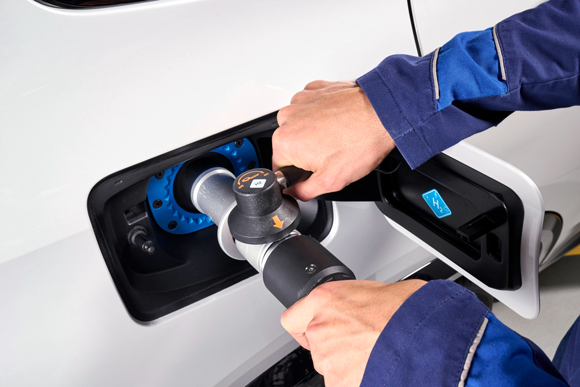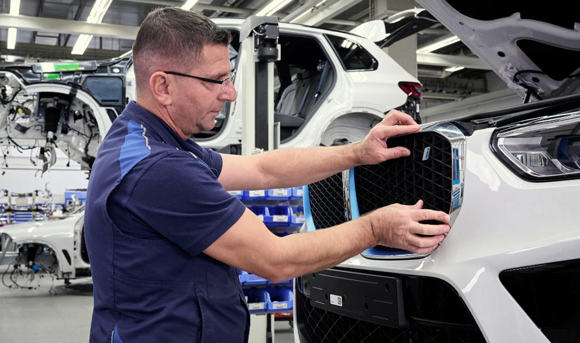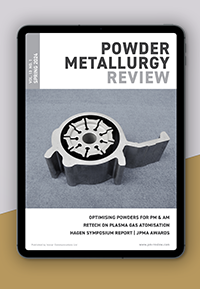Fleet of hydrogen-powered BMW iX5’s for real-world trials
March 7, 2023

The BMW Group has announced that a pilot fleet of BMW iX5 Hydrogen vehicles will be deployed later this year for real-world demonstration and trials. Following four years of development work, the BMW iX5 Hydrogen project is said to be entering its critical next phase, with around 100 vehicles being made available internationally to various target groups.
“Hydrogen is a versatile energy source that has a key role to play in the energy transition process and therefore in climate protection. After all, it is one of the most efficient ways of storing and transporting renewable energies”, stated Oliver Zipse, chairman of the board of management of BMW AG. “We should use this potential to also accelerate the transformation of the mobility sector. Hydrogen is the missing piece in the jigsaw when it comes to emission-free mobility. One technology on its own will not be enough to enable climate-neutral mobility worldwide.”
The BMW iX5 Hydrogen – developed on the basis of the current BMW X5 – was first unveiled as a concept at the IAA show in 2019. Initial prototypes were then made available at the IAA Mobility 2021 for visitors to experience as shuttle vehicles. Since then, the BMW Group has systematically pushed forward with development of hydrogen fuel cell technology as an additional option for emission-free mobility.
Fuel cell production
BMW is producing its fuel cell systems for the pilot fleet at its in-house competence centre for hydrogen in Munich. This technology is one of the core elements in the BMW iX5 Hydrogen and generates a high continuous output of 125 kW/170 hp.
A chemical reaction takes place in the fuel cell between gaseous hydrogen from the tanks and oxygen from the air. Maintaining a steady supply of both elements to the fuel cell’s membrane is of crucial importance for the drive system’s efficiency. In addition to the technological equivalents of features found on combustion engines, such as charge air coolers, air filters, control units and sensors, the BMW Group also developed special hydrogen components for its new fuel cell system. These include the high-speed compressor with turbine and high-voltage coolant pump, for instance.
The BMW Group sources the individual fuel cells from the Toyota Motor Corporation. The two companies have enjoyed a partnership characterised by trust for many years and have been collaborating on fuel cell drive systems since 2013.

Fuel cell systems are manufactured in two main steps, based on the individual fuel cells. The cells are first assembled into a fuel cell stack before they all the other components to produce a complete fuel cell system are fitted. Stacking of the fuel cells is largely a fully automated process. Once the individual components have been inspected for any damage, the stack is compressed by machine with a force of five tonnes and placed in a housing.
Final assembly of the fuel cell stacks includes a voltage test along with extensive testing of the chemical reaction within the cells. Finally, all the different components are fitted together in the assembly area to produce the complete system. During this stage, further components are fitted, such as the compressor, the anode and cathode of the fuel-cell system, the high-voltage coolant pump and the wiring harness.
In combination with a highly integrated drive unit using fifth-generation BMW eDrive technology (the electric motor, transmission and power electronics are housed together) at the rear axle and a power battery with lithium-ion technology developed specially for this vehicle, the powertrain channels maximum output of 295kW / 401 hp onto the road. In coasting overrun and braking phases, the motor also serves as a generator, feeding energy back into a power battery.

BMW iX5 Hydrogen’s production at Munich pilot plant
The BMW iX5 Hydrogen is being built in the BMW Group’s pilot plant at its Research and Innovation Centre (FIZ) in Munich. This is the bridge between development and production where every new model from the company’s brands is made for the first time. Around 900 people work in the body shop, assembly, model engineering, concept vehicle construction and Additive Manufacturing.
The FIZ team are tasked with ensuring that both the product and the manufacturing process are ready for series production. In the case of the BMW iX5 Hydrogen, specialists in hydrogen technology, vehicle development and initial assembly of new models have been working closely together to integrate the drive and energy storage technology.
Download PM Review magazine















